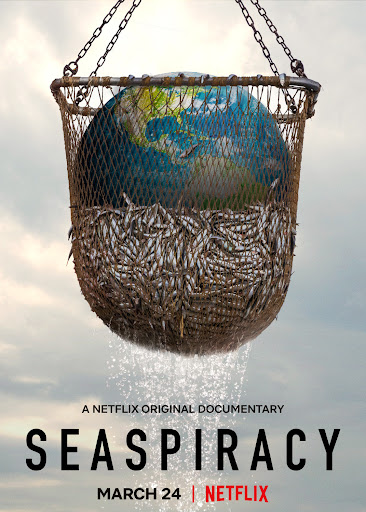What to read, what to watch, what to do.
The books you really have to read
These can be judged by their covers, because the content is just as good. Teasing, unexpected, shocking, the images that give life to these books are only the first page of stories that are (very) worth reading.

© Penguin
© Penguin
Tampa, by Alissa Nutting, Harper Collins (2012), € 18,03.
Charlie And The Chocolate Factory, by Roald Dahl, Penguin Modern Classics (2014), € 10,90.
Sex And The Citadel: Intimate Life In A Changing Arab World, de Shereen El Feki, Pantheon (2013), € 7,98.
Sluts, by Dennis Cooper, Capo Press (2005), € 13.
Satan Burger, by Carlton Mellick III, Eraserhead Press (2001), € 17,16.
My Turn: Hillary Clinton Targets The Presidency, by Doug Henwood, Seven Stories Press (2016), € 10.
The Vivisector, by Patrick White, Penguin (2009), € 8.
All We Saw, by Anne Michaels, Knopf (2017), € 11.
Cannibals In Love: A Novel, by Mike Roberts, FSG Originals (2016), €14.
Despair, by Vladimir Nabokov, Penguin Modern Classics (2015), € 12,92.
The movies and documentaries you really have to watch
The invention of cinema made motion pictures one of the greatest ways to discover, and know, every corner of the planet. Beyond love stories and the comedies we are used to, there are works that show us the world that surrounds us, naked and raw. These are some of those.

Seaspiracy (2021)
Seaspiracy (2021)
“The planet is on high alert”. In the past few years, this phrase has become almost ordinary. From climate change to species extinction, from migration to the fight for human rights, from pollution of rivers and oceans to deflorestation of extensive green areas, the planet’s problems are building up, as a dangerous ticking time bomb, about to go off. That’s why it is urgent to be aware, every day, of any action we take, no matter how small it is, it (really) can contribute to a better world - greener, purer, fairer. When it is impossible for us to attend to every single matter of this “home” of ours, and facing the constant information we are bombarded with, it is good to know that there are movies and documentaries that can help us reflect upon the path to follow as mankind. A good example is the iconic The Qatsi Trilogy (1982-2002), the movie trilogy by Godfrey Reggio, with a Philip Glass soundtrack, made by the works of Koyaanisqatsi, Powaggatsi and Nagoygatsi, where there is powerful criticism to the modern society through a mix of sounds and images, which confront the viewer with their habits - and their sins. The same way, Cowspiracy (2014) is a punch in the gut about the stock breeding industry, and about how it is butchering the planet’s natural resources. A bit more conceptual is Voyage of Time: Life’s Journey (2016), by Terrence Malick, a deep glance over the birth and death of the universe as we know it. The American director worked on the documentary for over 40 years, and sees it as one of the most important works of his career. Showed at the Sundance Film Festival, Plastic China (2016), by Jiuliang Wang, is a documentary about the lives of two families that make a living recycling plastic residue imported from developed countries. Seaspiracy premiered this year, an analysis about the consequences of fishing and endless fish consumption. The lost could go on, because these important questions are far from solved, but we still make honorable mentions to An Inconvenient Truth (2006), a winner of two Oscars in 2007, an alert to the consequences of global warming portrayed by the american vice president Al Gore, Chasing Ice (2012), about the effects of global warming, About The Flood (2016), a documentary that questions the impacts of climate change, in which Leonardo DiCaprio discusses the subject with several experts, from politicians to scientists.
The exhibitions you really have to see
A picture is worth a thousand words, and these exhibitions can prove it: more than just mentioning sustainability and the planet, they invite us to witness it through the look of those who better capture them in pictures. Nature, human being, environmental impact, they all gain 2D visual contours to contrast with the beauty of nature and even of mankind in excess, the absence of consciousness and the denialism to learn from our mistakes and admire what is worth saving.
Amazônia, Sebastião Salgado, Science Museum, Londres
These exhibition counts with more than 200 images captured throughout seven years by the revered Brazilian photographer during his several journeys through the Amazonian forest, that you will be able to see up close at this London museum. Through Salgado’s lenses, the exhibition, available until March 2022, is an invitation to explore the most beautiful and unique landscapes of the hostile destination in black and white, a binomial characteristic of Sebastião. The activist and environmentalist is a reference when it comes to nature and social disparity, and this Amazônia shows it. Actually, the exhibition includes video interviews to some of the indigenous leaders of 12 local communities that fight to protect their home, and also an immersive soundtrack of forest sounds. To open up, the Science Museum also presents, as an introduction, a short film commissioned by the museum itself about the vital role of the Amazon in preventing climate change, highlighting not only the dangers of its deforestation, but also what can and is being done to prevent it from reaching breaking point. The image selection in itself, curated by the photographer’s wife, Lénia Wanick Salgado, does not want to simply be a polished look of the Earth’s lung, but, instead, a visual testimony of the impact that environmental damages have both on the land and on its communities.
Amazônia, at the Science Museum, Exhibition Rd, South Kensington, London SW7 2DD, United Kingdom. From Wed. To Sun.,10 a.m. to 6 p.m.. Entry: £10. From October 13 to March 2022.
More information at sciencemuseum.org.uk.
Gyres, Ellie Ga, Galeria Zé dos Bois, Lisboa
ZdB serves as a stage to the work on maritime tides, explained in a simplistic way, of the artist Ellie Ga. These “gyres” that give a name to Ga’s exhibition are a reference to the powerful and massive sea tides that end up transporting all kinds of objects that, after leaving this maritime vortex, arrive to the shore to then be collected by beach gleaners trying to track their itineraries. In this work at display, Ellie wanted, through film, to enable the circulation of images and ideas that populate her mind, just like the swirl-shaped movement of gyres, coordinating and connecting the movement of ocean tides and the commitment of the gleaners. A mix between personal memories and drifting objects, in an audiovisual presentation narrated by the American artist, and with images that come from Egypt, Greece, England, and the United Nations to arrive at the Shore of Galeria Zé dos Bois until 26 November.
Gyres, at Galeria Zé dos Bois, Rua da Barroca, 59, Lisboa. From Mon. to Sat., 6 p.m. to 10 p.m.. Entry: €3. From September 16 to November 26, 2021.
More information at zedosbois.org.
We Are History, Somerset House, Londres
Through distinct viewpoints of a selection of artists, this exhibition shows a different outlook on the impact of Mankind in the Planet, tracing complex relations between the climate crisis of modern times and the legacy of colonialism. Eleven artists - Alberta Whittle, Allora & Calzadilla, Carolina Caycedo, Louis Henderson, Malala Andrialavidrazana, Mazenett Quiroga, Otobong Nkanga, Zineb Sedira and Shiraz Bayjoo - with connections to the Caribbeans, South American and Africa, rise up as a reference and an active voice in the transmission of a message conveyed through images related to social and environmental justice. Photography, printing, textile, installation and video are the tools of this show that wants to be an emotional and provocative journey through the topic of climate change by placing questions on the environmental issues that the Southern Hemisphere has been facing - just like the past and taking important information from the cultural practices and knowledge systems of the Indigenous people. In an initiative that shows how beautiful, and yet fragile, Nature can be, the contribution of this artistic collective looks to expand the traditional narrative on climate change, usually associated with the Industrial Revolution of the West, to look for answers in periods of change like the colonial era, that saw agriculture and migration, a consequence of slavery, as enablers of deep changes in the global day-to-day.
We Are History, Race, Colonialism & Climate Change, Somerset House, Strand, London WC2R 1LA, United Kingdom. From Sat. to Tue., 11 a.m. to 6 p.m.; from Wed. To Fri., 12 a.m to 8 p.m. Free entry. From October 16 to February 06 2022.
More information at somersethouse.org.uk.
Originally published in the No Comments issue of Vogue Portugal, from November 2021. Full credits and story on the print version.
Most popular
.png)
.png)

Relacionados

.jpg)

Como escolher joias para iluminar o rosto? A regra de “ouro” e 5 dicas para brilhar
16 Apr 2025


